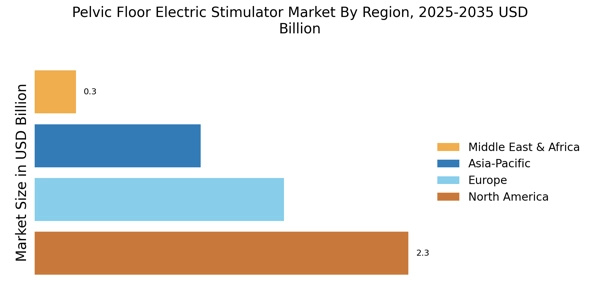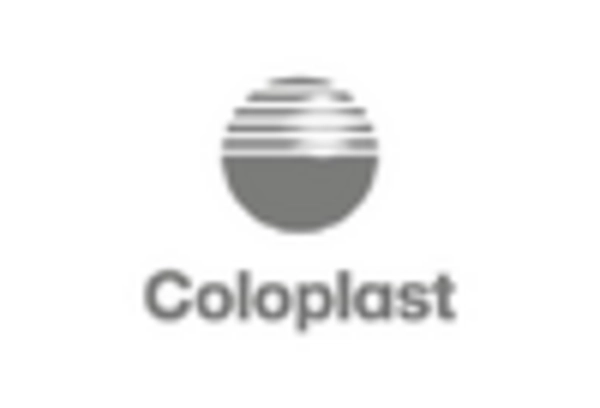Increased Focus on Women's Health
The heightened emphasis on women's health issues is a critical driver for the Pelvic Floor Electric Stimulator Market. As societal attitudes shift towards prioritizing women's health, there is a growing recognition of the importance of addressing pelvic floor disorders. This focus has led to increased funding for research and awareness campaigns, which in turn promotes the use of pelvic floor electric stimulators. Healthcare professionals are now more equipped to discuss these issues with patients, leading to higher rates of diagnosis and treatment. The Pelvic Floor Electric Stimulator Market stands to benefit from this trend, as more women seek effective solutions for their pelvic health concerns, indicating a potential for sustained market growth.
Expansion of Home Healthcare Services
The expansion of home healthcare services is reshaping the landscape of the Pelvic Floor Electric Stimulator Market. With an increasing number of patients receiving care at home, the demand for portable and user-friendly medical devices is on the rise. Pelvic floor electric stimulators are well-suited for home use, allowing patients to manage their conditions conveniently. Market analysis suggests that the home healthcare segment is experiencing rapid growth, driven by an aging population and a preference for at-home treatment options. This trend is likely to enhance the accessibility of pelvic floor electric stimulators, thereby broadening their market reach and fostering growth within the Pelvic Floor Electric Stimulator Market.
Rising Incidence of Pelvic Floor Disorders
The increasing prevalence of pelvic floor disorders, such as urinary incontinence and pelvic pain, drives the Pelvic Floor Electric Stimulator Market. According to health statistics, approximately 25 million adults experience urinary incontinence, highlighting a substantial patient population that may benefit from electric stimulation therapies. This growing incidence necessitates effective treatment options, thereby propelling demand for pelvic floor electric stimulators. As awareness of these conditions rises, healthcare providers are more likely to recommend these devices, further stimulating market growth. The Pelvic Floor Electric Stimulator Market is thus positioned to expand as more individuals seek solutions for their pelvic health issues, indicating a robust potential for innovation and product development in this sector.
Technological Innovations in Medical Devices
Technological advancements in medical devices significantly influence the Pelvic Floor Electric Stimulator Market. Innovations such as improved electrode designs, user-friendly interfaces, and enhanced portability of devices contribute to their effectiveness and patient compliance. The integration of smart technology, including mobile applications for monitoring and feedback, is becoming increasingly prevalent. These advancements not only enhance the therapeutic efficacy of pelvic floor stimulators but also attract a broader consumer base. As the market evolves, manufacturers are likely to invest in research and development to create more sophisticated devices, thereby driving growth in the Pelvic Floor Electric Stimulator Market. The ongoing evolution of technology suggests a promising future for these medical devices.
Growing Demand for Non-Invasive Treatment Options
The shift towards non-invasive treatment modalities is a notable trend impacting the Pelvic Floor Electric Stimulator Market. Patients increasingly prefer therapies that do not require surgical intervention, leading to a rise in the adoption of electric stimulators. These devices offer a viable alternative for managing pelvic floor disorders, providing relief without the risks associated with invasive procedures. Market data indicates that non-invasive treatments are gaining traction, with a significant percentage of patients opting for them over traditional surgical options. This trend is likely to continue, as healthcare providers increasingly recommend pelvic floor electric stimulators as first-line treatments, thereby enhancing the market's growth potential.


















Leave a Comment